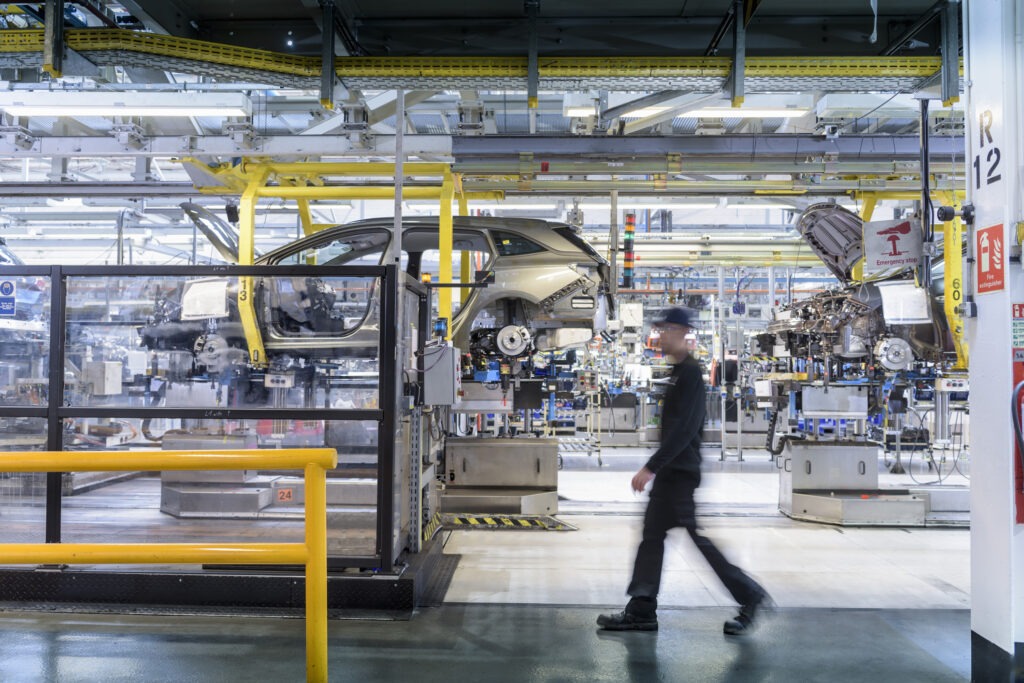Is there an automotive skills shortage?
11 April 2024

A sufficient number of skilled workers is vital for the global automotive industry to run smoothly. But what if there is a skills shortage? Tom Hooker, Autovista24 journalist, investigates the issue.
The automotive sector relies on unique skill sets obtained through study, training, and real-world experience. Without these abilities, the industry can face a skills gap.
This can be the result of an increasing number of vacancies for roles where specific training and education are needed. On the other hand, a shortage of applicants with the correct skillset and experience required can also cause this undesirable effect.
In the EU, the automotive industry directly and indirectly employs 13 million people, according to ACEA. This accounts for 7% of employment across the bloc. Automotive manufacturing provides 3.1 million jobs, equating to 10.5% of all EU manufacturing work.
UK skills shortages
According to the Society of Manufacturers and Traders (SMMT), 800,500 jobs in the UK were dependent on the automotive sector in 2022. But what vacancies currently exist and where are they most prevalent?
In February this year, the Institute of the Motor Industry reported that the automotive aftermarket faces 23,000 vacancies. This resulted in the sector posting one of the highest vacancy rates in the UK, with an average of 4.3 job openings per 100 employees. This rate is 43% above the average for all sectors.
In a survey by vehicle technician and MOT recruitment specialist Autotech Recruit, 52% of respondents thought skills shortages stopped them from meeting customer demand last year. Of the 109 UK automotive industry employers questioned, 49% revealed an overall skill shortage was the primary reason for using temporary staff, despite 71% of respondents initially planning to recruit for permanent roles.
This represents a wider trend of a lack of skilled workers. A 2022 report published by the Institution of Engineering and Technology (IET), found a shortfall of over 173,000 employees in the UK’s science, technology, engineering and maths (STEM) sectors. This is estimated to cost the local economy £1.5 billion (€1.75 billion) per year.
‘A skills shortage certainly currently exists in automotive,’ Hayley Pells, policy and public affairs lead at the Institute of the Motor Industry (IMI) told Autovista24.
‘There are a number of factors that are contributing to the skills gap. The after-effects of COVID-19 can be attributed to some extent; as can the Brexit effect. But the problem is broader than that. It seems there are multiple barriers to individuals choosing a career in automotive,’ Pells stated.
Ongoing skills challenges
At the start of 2023, UK vacancies in the automotive aftermarket hit 30,000. In contrast, this figure sat at 10,000 at the start of 2021.
‘When we look at the vacancy rates in the UK’s motor trades sector alongside job posting trends in the UK automotive sector, we get a clearer picture of the automotive employment market today. These analyses reveal a sector going through big changes in demand for specific roles and skills, influenced by broader economic and technological shifts,’ Pells commented.
‘A noticeable second rise in vacancy rates in the motor trades sector at the beginning of 2023, which then levelled off, coincided with a spike in job postings in June 2023. This spike signalled strong demand for workers, likely as businesses tried to tackle skill shortages and adapt to changing consumer habits and technological advancements,’ the IMI’s policy and public affairs lead commented.
‘A drop in job postings to 37,000 by January 2024, while vacancy rates started to decrease but remain high, suggests that although some roles are being filled, attracting, and keeping the necessary talent continues to be a challenge,’ Pells added.
A striking outlook
In 2031, the IMI predicts that there will be 557,484 jobs in automotive retail, a 2% decline from 2021 figures. However, the demand for employment replacement is high, with IMI data suggesting 111,400 roles need to be filled in the next decade. This is due to retirement, migration, and other factors.
‘The skills gap in the automotive workforce, which currently is only getting bigger, is a serious concern,’ Pells explained. ‘If people and businesses cannot get from A to B because they cannot rely on a competent workforce to maintain and repair both private and commercial vehicles on UK roads, there is a serious risk to the transportation that underpins the country’s social and economic infrastructure.’
Electric skills issues
The transition to electric vehicles (EVs) may introduce further challenges, with the workforce needing to adapt to these new technologies. In the UK, 52,000 automotive repair technicians are EV qualified, equating to 22% of the workforce.
By 2035, the IMI forecast that 184,960 technicians will be required to service and maintain EVs. This will create a gap of 29,767 workers who are not fully qualified.
‘The pace of change in automotive technology is at its fastest for decades,’ Pells commented. ‘And the correlation between trends in vacancy rates and job postings in the sector illustrates a complex scenario, defined by technological evolution, shifting consumer preferences, and the ongoing challenge of bridging the skills gap.
‘Automotive is in transition, seeking to address the skills gap and adapt to future mobility needs simultaneously, to maintain a successful and thriving workforce and prosper in this new landscape,’ she added.
In Autotech Recruit’s survey, 71% of respondents in the repair sector said that their top staff training priority was in electric and hybrid vehicles.
‘The delay in the ban on the sale of new internal-combustion engine (ICE) vehicles to 2035 also means that the workforce must be omni-competent – able to work on both ICE and EV technologies, as well as adapt to the growing prevalence of vehicles fitted with advanced driver-assistance systems (ADAS) technology,’ Pells added.
Adapting to ADAS
Another growing technology that will also have a big impact is ADAS. Only 2% of technicians in the UK are currently ADAS qualified, equating to a total of 3,810 workers.
This contrasts with 11% of all cars in the country which have some degree of SAE Level 2 autonomy. This will increase to 17% at the end of 2024, before reaching over 20% in 2025 and over 40% in 2030.
‘Urgent focus is needed is skills to work on vehicles fitted with ADAS,’ Pells explained. ‘This is expected to rise swiftly over the next decade, driven by EU regulations requiring all new vehicles since July 2022 to include several safety components, including Level 2 autonomous capabilities.’
‘Latest IMI data suggests 39,000 ADAS-trained technicians will be needed by the end of 2024 to service the growing parc of vehicles featuring this technology,’ Pells stated.
This technology and software-centred problem is in no way exclusive to the UK. According to McKinsey & Company, only 15% to 20% of current research and development workers at European manufacturers have software skills, compared to almost 45% of new employees.
‘The IMI believes the shift in automotive technology – EVs and ADAS – has intensified the challenges faced by the sector, with 52% of job postings in January 2024 seeking vehicle technicians, mechanics, and electricians. This is slightly higher than their actual share in the sector, which is 48%,’ said Pells.
‘There are currently 218 occupations across the sector, with technological advances – from ADAS and electric to connected motoring and online sales – creating opportunities that go far beyond traditional perceptions of working in automotive,’ Pells stated.
The next generation
With the right training and education, the workforce of tomorrow will be equipped with the correct skills to handle the vehicles of the future. However, perceptions of automotive jobs also need to change.
Greenpower Education Trust is one of the organisations aiming to tackle this. By getting young people to design, build and race electric cars, they hope to spark enthusiasm for STEM subjects. The UK-based charity began its work in 1999 with two engineers. It has now grown into an international race series. Events are focused on endurance, with winners determined by the distance a car can cover in 90 minutes.

‘We provide car kits to schools, youth clubs, and other teams that want to get involved. They then develop them, do all the engineering, and then go on to do far more technical things such as building aerodynamic shells and lightweight chassis,’ Barnabas Shelbourne, CEO of Greenpower told Autovista24.
‘It is all about getting young people excited. It provides a vehicle into STEM, with this practical way where you can put all your learning from the classroom into practice. You can look at how the maths, science, and technology that you are learning are relevant in real-life situations.

‘The cherry on top is the fact that they get to go and compete against other teams. It is a motorsport, and they are constantly looking at how they can improve. It also develops those human skills around how young people can become leaders, learn how to communicate effectively and look at logistics,’ Shelbourne explained.
Qualification quandary
Meanwhile, interesting developments are underway in automotive education. From August to October 2023, the automotive sector saw a 21% year-on-year decrease in qualification and apprenticeship certificates. This is despite total vocational certificates recording a 3% increase in the same period.
While foundational and Level 1 qualifications are growing slightly each quarter, Level 2 certifications are trending in the opposite direction. This indicates a shift towards entry-level automotive education.
This same trend is also apparent in apprenticeships, which are seeing an improvement in demand. Out of all UK apprenticeships started between August and October 2023, 43% were at an advanced level, compared to 71% in the automotive sector. Yet, this has fallen from 77% at the start of 2022, suggesting an increase in intermediate apprenticeships.
The average age of young people in automotive apprenticeships bucks the overall trend too. From August to October 2023, 67% of individuals starting automotive apprenticeships in the UK were under 19 years old. This contrasts with the regional average of 33%.
‘There were 3,700 automotive apprenticeship starts in the first three months of the academic year 2023-2024, which is 9% higher than the same time the previous year. This is the highest first-quarter performance since the academic year 2019-2020,’ Pells explained.
‘What is particularly interesting is that there has been a pronounced uplift in intermediate-level apprenticeships which may reflect a growing demand for foundational skills and entry-level qualifications, possibly serving as a gateway to more advanced training or responding to current job market needs,’ Pells added.
Change needed
Other efforts are being made to tackle the skills shortage. The IMI is using various campaigns, such as ‘There’s more to Motor’ to improve perceptions of the automotive sector and encourage individuals to consider a career in the industry. This includes professionals at mid-career stages.
Another suggested approach is creating a larger recruitment pool, using applicants from other sectors with transferrable skills.
‘To continue longer term, there also needs to be greater industry engagement and support. The industry needs to come together to spread the word, improve perceptions and encourage talented individuals to consider a career in automotive,’ said Pells.
‘If we do not start putting resources into this and being serious about it, then we are just going to fall behind. Our manufacturing is just going to decline, you know, and we will not have that talent,’ commented Shelbourne.

‘Once you have lost the knowledge and it is not passed on to the next generation, it is really hard to get back, and we will be going to other countries to train us, when actually, we should be the leaders. We are a small country that does a lot and makes a big contribution, we have got a lot of resources and we just need to use them properly, otherwise we will fall behind,’ Shelbourne explained.



